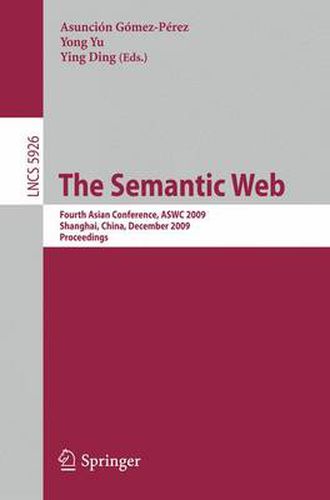Readings Newsletter
Become a Readings Member to make your shopping experience even easier.
Sign in or sign up for free!
You’re not far away from qualifying for FREE standard shipping within Australia
You’ve qualified for FREE standard shipping within Australia
The cart is loading…






This title is printed to order. This book may have been self-published. If so, we cannot guarantee the quality of the content. In the main most books will have gone through the editing process however some may not. We therefore suggest that you be aware of this before ordering this book. If in doubt check either the author or publisher’s details as we are unable to accept any returns unless they are faulty. Please contact us if you have any questions.
The Annual Asian Semantic Web Conference is one of the largest regional events in Asia with focused topics related to the Semantic Web. With the decade-round endeavor of Semantic Web believers, researchers and practitioners, the Semantic Web has made remarkable progress recently. It has raised significant attention from US and UK governments, as well as the European Commission who are willing to deploy Semantic Web technologies to enhance the transparency of eGovernment. The Linked Open Data initiative is on its way to convert the current document Web into a data Web and to further enabling various data and service mashups. The fast adoption of Semantic Web technologies in medical and life sciences has created impressive showcases to the world. All these efforts are a crucial step toward enabling the take-off and the success of the Semantic Web. The First Asian Semantic Web Conference was successfully held in China in 2006. With the following editions in Korea in 2007 and Thailand in 2008, it fostered a regional forum for connecting researchers and triggering innovations. This year, the 4th Asian Semantic Web Conference was held in Shanghai, China. We received 63 submissions from Asia, Europe, and North America, and 25 papers were accepted (the acceptance rate is around 40%). Each submission was reviewed by at least three members of the Program Committee. The Chairs moderated the discussion of conflict reviews or invited external reviewers to reach the final decisions.
$9.00 standard shipping within Australia
FREE standard shipping within Australia for orders over $100.00
Express & International shipping calculated at checkout
This title is printed to order. This book may have been self-published. If so, we cannot guarantee the quality of the content. In the main most books will have gone through the editing process however some may not. We therefore suggest that you be aware of this before ordering this book. If in doubt check either the author or publisher’s details as we are unable to accept any returns unless they are faulty. Please contact us if you have any questions.
The Annual Asian Semantic Web Conference is one of the largest regional events in Asia with focused topics related to the Semantic Web. With the decade-round endeavor of Semantic Web believers, researchers and practitioners, the Semantic Web has made remarkable progress recently. It has raised significant attention from US and UK governments, as well as the European Commission who are willing to deploy Semantic Web technologies to enhance the transparency of eGovernment. The Linked Open Data initiative is on its way to convert the current document Web into a data Web and to further enabling various data and service mashups. The fast adoption of Semantic Web technologies in medical and life sciences has created impressive showcases to the world. All these efforts are a crucial step toward enabling the take-off and the success of the Semantic Web. The First Asian Semantic Web Conference was successfully held in China in 2006. With the following editions in Korea in 2007 and Thailand in 2008, it fostered a regional forum for connecting researchers and triggering innovations. This year, the 4th Asian Semantic Web Conference was held in Shanghai, China. We received 63 submissions from Asia, Europe, and North America, and 25 papers were accepted (the acceptance rate is around 40%). Each submission was reviewed by at least three members of the Program Committee. The Chairs moderated the discussion of conflict reviews or invited external reviewers to reach the final decisions.